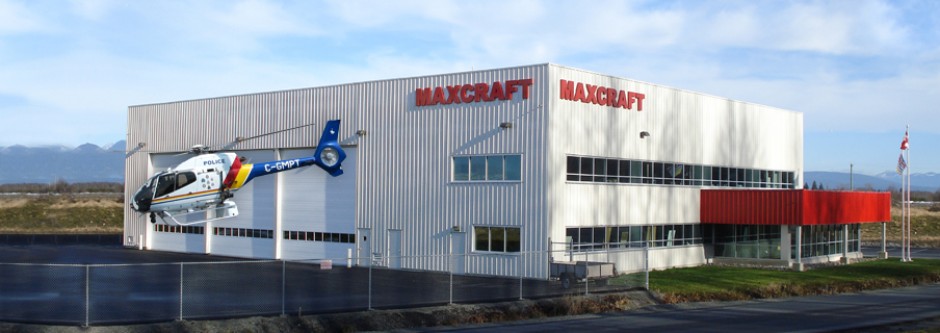Once seen primarily on large turbine-powered aircraft, a variety of lower-priced AOA indicators have recently become available for installation in smaller general aviation aircraft as well. An AOA indicator provides a visual reference to the angle of the wing relative to the flow of air over the wing’s surface; exceeding the critical AOA, regardless of airspeed, may result in an aerodynamic stall.

The FAA’s announcement that it is going to make the installation of angle-of-attack indicators in light general aviation airplanes as easy as possible is an incredible development. Why would the FAA reduce the certification barriers of a flight-critical instrumentation system? The answer is simple: AOA indicators are long overdue in general aviation airplanes, and flying with the technology will improve safety.
We formally asked Transport Canada if they too were going to relax requirements for AOA systems, and their answer was no. In Canada you still need certification (an STC) to install an AOA indicator in a certified aircraft (the experimental category can do as they please). In TC’s own words; ” While Transport Canada agrees that proper AoA information presented to the pilot is likely beneficial to safety, we have concerns regarding the risk of an improperly installed or calibrated system providing erroneous information when airspeed information is already available to the pilot.” The good news is that there are certified AOA systems available, including a recently announced and somewhat unique Aspen product detailed at the end of this article.
AOA Background

There’s an old saying among pilots: “airspeed equals life.” In other words, keep your speed up and you’ll avoid stalling the wing during critical phases of flight, such as the base-to-final turn. However, this phrase is misleading because the stalling airspeed of a wing will change based on aircraft weight and load factor. Also, how does one know that their airspeed indicator is properly calibrated? When was the last time it was checked? Chances are, the only check that was ever made was right after the airplane left the factory.
An angle-of-attack indication system, on the other hand, provides an instantaneous readout of stalling margin regardless of how heavily loaded you are, what angle of bank you’ve got dialed in or what the wind is doing. In this way, we should change the old maxim to “angle of attack equals life.”
For those of us who fly without an AOA indicator, at least for now, the key is to unload the wing, which is easy enough to do in the pattern. Hint: point the nose down. You lose a little altitude in the process, but greatly reduce AOA, even if there isn’t a gauge there to tell you as much. If there’s no altitude to lose and you sense you’ll need to pull some Gs to make that turn, keep it wide, overfly the airport and live to get it right on the next circuit.
Aspen’s AOA Solution
Earlier we mentioned a unique AOA solution from Aspen now suitable for installation in Canada. What’s so unusual about Aspen’s AOA indicator is that it does not rely on any sensors on the wing or even extra wiring or plumbing, as other AOA systems do. Aspen’s Evolution AOA indicator calculates angle of attack using flight envelope data received from an air data computer and attitude heading reference system (AHRS) integrated in the Evolution 1000 PFD or Evolution 1000 MFD, and a certified GPS. It does not require additional hardware, nor does it require any external aircraft modifications or sensors.
 With a simple software upgrade to the Aspen EFD Pro or MFD1000 plus a short calibration flight, Aspen is addressing one of the FAA’s most wanted safety issues for the general aviation community and making Transport Canada happy since the system is already STC’d and installed in your aircraft.
With a simple software upgrade to the Aspen EFD Pro or MFD1000 plus a short calibration flight, Aspen is addressing one of the FAA’s most wanted safety issues for the general aviation community and making Transport Canada happy since the system is already STC’d and installed in your aircraft.
Key Benefits
Improves safety – provides real time flaps up and down stall margin awareness – enables the pilot to see available lift before changing configuration – crucial when making a go-around.
Intuitive display – provides an immediate, clear visual display of trend toward stall and stall margin. Pilot comprehends important information at a glance.
Easy Installation – requires no additional probes, wiring or equipment. Installation cost and down time are minimal.
Primary Field of View – AOA is displayed on the Aspen PFD or MFD. Information is displayed in pilot’s natural field of view.
Maxcraft Avionics is a leader in airplane and helicopter avionic system upgrades, including installation of everything from basic VHF Radios and flight instruments, all the way to sophisticated GPS, TCAS, EFIS, and glass cockpit systems. We have the largest avionics facility in Canada and over 20,000 unique part numbers in our inventory to repair your aircraft or upgrade your cockpit.



